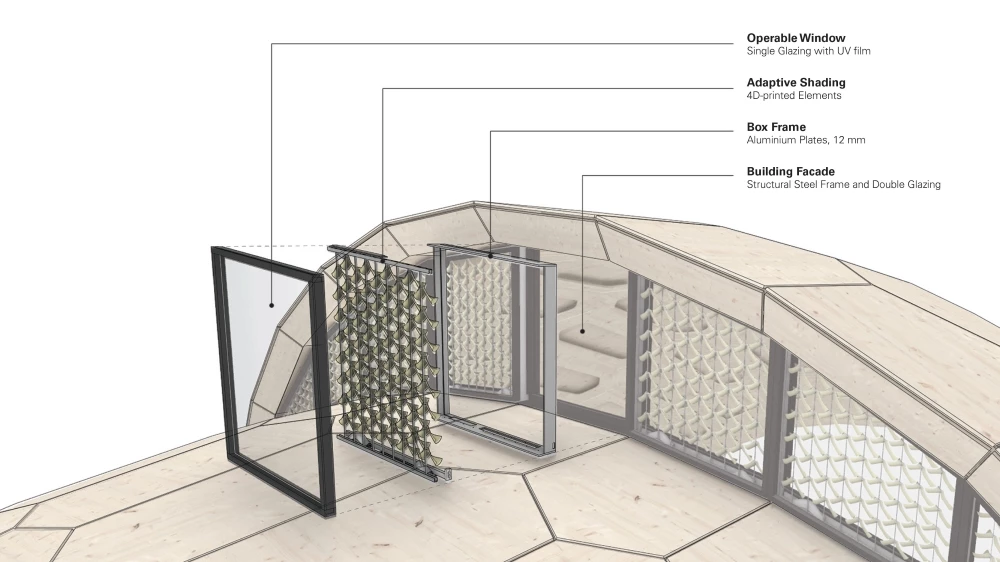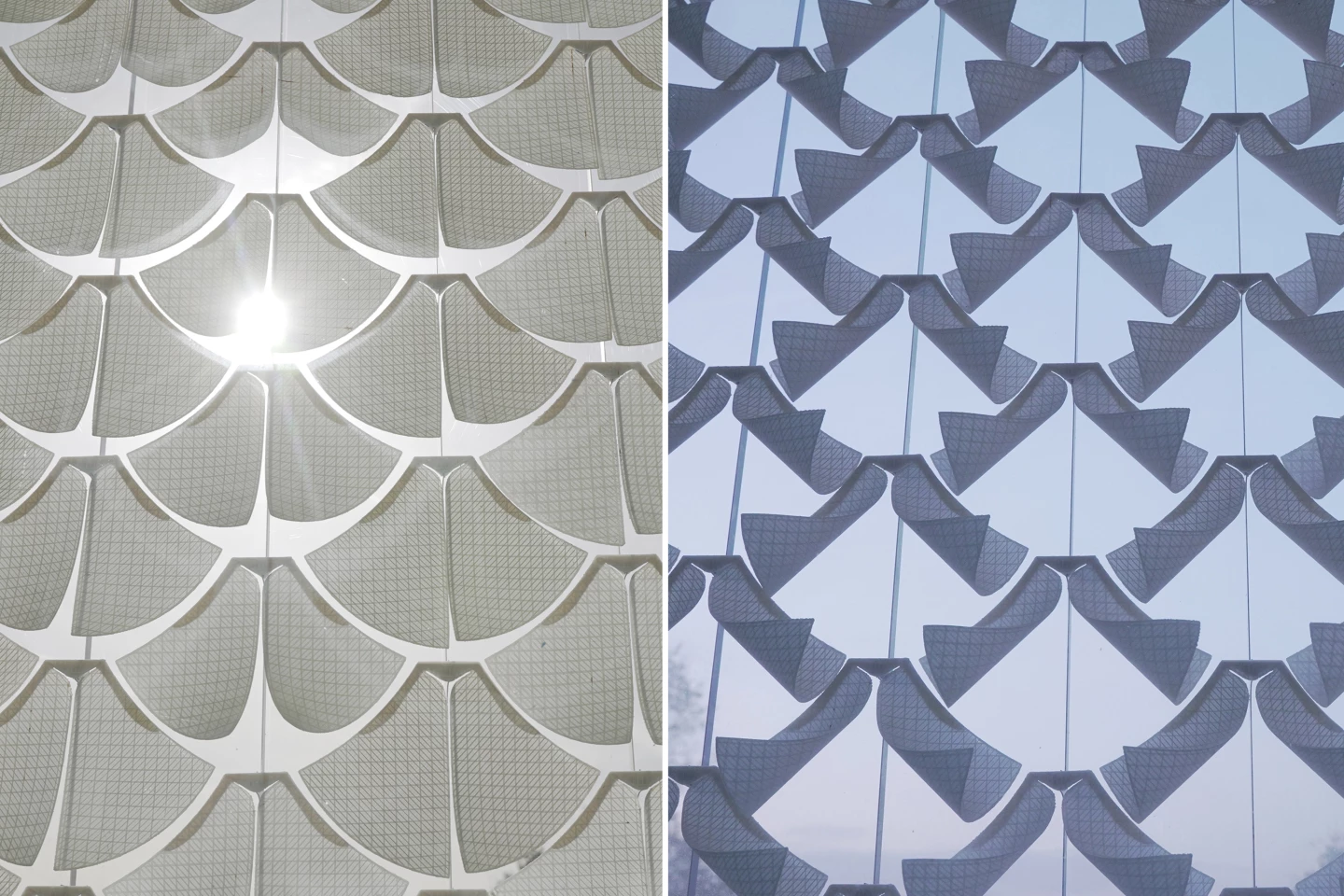Pine cones are pretty smart for things with no brains, enough so that scientists have copied them to create a unique window shading system. The setup blocks sunlight in the summer and lets it through in the winter, without using any electricity.
As you may have noticed, pine cones close up their scales in cool, damp weather, but spread them open when it's hot and dry outside. They do this to ensure that their seeds only get released and dispersed when the weather is warm, sunny, and most conducive to their growth.
The cones are able to open and close via two stacked layers of cellulose fibers that make up each scale. Those fibers are aligned in one direction in one layer, and in another direction in the other. When exposed to moisture, both of the layers swell as they absorb water vapor, although the direction of alignment of the fibers causes them to swell in different directions.
The upshot is that one side of the scale extends longitudinally while the other side bends, allowing the scales to close in on one another in wet conditions. When the weather gets warmer and drier, both layers shrink back to their default state, allowing the scales to spread open again.

Inspired by this mechanism, scientists from Germany's universities of Stuttgart and Freiburg developed what is known as the Solar Gate window facade system.
It consists of a gridded array of pine-cone-scale-inspired self-bending elements, which are housed between two panes of glass in an aluminum-frame window unit. Vents in the frame allow outdoor air to flow through the unit, between the panes.
Each 3D-printed (technically 4D-printed) element is made up of three layers.

The bottom layer consists of side-by-side filaments of a cellulose powder/thermoplastic blend. Those filaments are situated perpendicular to the direction of the bend, and they swell when exposed to moisture thanks to their cellulose content.
The middle layer is made up of gap-spaced side-by-side filaments that are composed solely of a different type of thermoplastic, which does not swell when wet. Those filaments are arranged in line with the direction of the bend, putting them at a right angle to the underlying cellulose filaments.
The top layer consists of a mesh of flexible biocomposite filaments that lie diagonal to the direction of the bend. Their only purpose is to hold the whole element together, by bonding with the other two layers.

When the element is exposed to moist air, the bottom-layer cellulose filaments respond by swelling/expanding. Because the bonded middle-layer filaments restrict the cellulose filaments from expanding upward, however, they can only expand downward and to either side.
The resulting asymmetric expansion causes the element to curl upwards. When it later dries out, it returns to its flattened state.

In a test of the technology, a total of 424 Solar Gate elements (contained within eight window units) were placed in the south-facing skylight of a research building on the University of Freiburg campus for over a year.
Sure enough, the elements curled up during the cool, wet winter, allowing sunlight through to warm and illuminate the building's interior. And during the warmer, drier summer months, the elements flattened out to block sunlight, helping to keep the interior cool.
"We are achieving a shading system that opens and closes autonomously in response to changes in the weather, without the need for operational energy or any mechatronic elements," says the University of Stuttgart's Prof. Achim Menges. "The bio-material structure itself is the machine."
The research is described in a paper that was recently published in the journal Nature Communications. Readers should take note, though, this isn't the first time that scientists have harnessed "pine cone power" for use in human technology.
Previous studies have developed a shading system in which entire wooden slats open and close, "smart " clothing fabric that adapts to the ambient temperature, and even tiny mobile robots.
Sources: University of Stuttgart, Solar Gate





